 |
 |
 |
| |
Getting to Zero New Diagnoses in San Francisco: The Potential Role of PrEP
|
| |
| |
Reported by Jules Levin
CROI 2018 March 4-7 Boston MA
Susan P. Buchbinder1, Stephanie E. Cohen1, Jen Hecht2, Ling Hsu1, Robert P. Kohn1, Henry F. Raymond1, Albert Y. Liu1, Hyman Scott1, Oliver Bacon1, Tracey Packer1, Susan Philip1, Diane V. Havlir3, Susan Scheer1
1San Francisco Department of Public Health, San Francisco, CA, USA,2San Francisco AIDS Foundation, San Francisco, CA, USA,3University of California San Francisco, San Francisco, CA, USA
WEBCAST http://www.croiwebcasts.org/console/player/37189?mediaType=slideVideo&&crd_fl=1&ssmsrq=1522260976648&ctms=5000&csmsrq=1009
CROI: The Rapid ART Program Initiative for HIV Diagnoses (RAPID) in San Francisco (03/08/18)
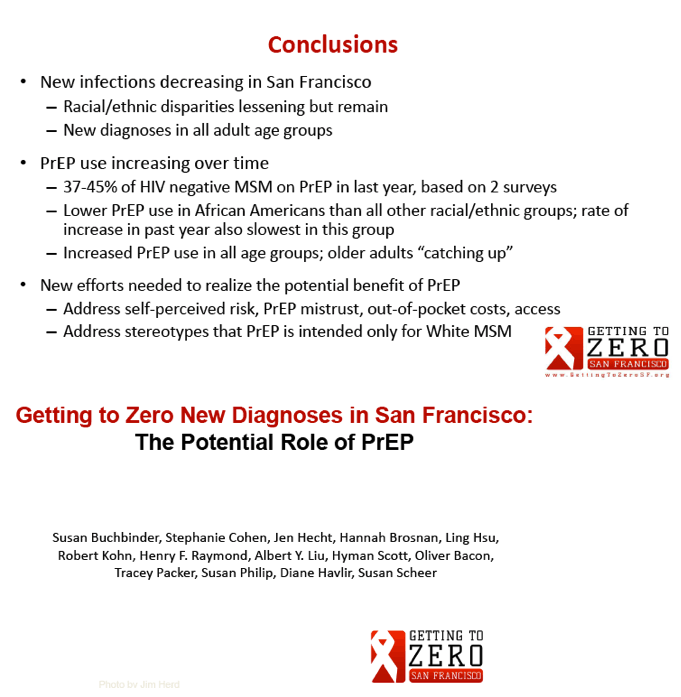
Program Abstract:
San Francisco's Getting to Zero (SF GTZ) initiative aims to reduce new HIV diagnoses by 90% from 2013-2020; SF GTZ protocols are replicated by other cities. This analysis reports on progress toward this goal and potential facilitators and barriers.
Data are collected on SF residents with newly diagnosed HIV using active and passive surveillance of mandatory lab reporting. Data on PrEP use came from men who have sex with men (MSM) in the 2014 National HIV Behavioral Surveillance Survey (NHBS, n=411), a community-based survey (STOP AIDS, n=1049 in 2015, n=910 in 2016) and the municipal sexually transmitted disease clinic (SFCC, n=4954 in 2014, n=5224 in 2015, n=5432 in 2016). MSM were considered eligible for PrEP if they were not known to be HIV infected and reported condomless anal sex, a sexually transmitted infection, or an HIV positive partner in the prior 12 months.
New HIV diagnoses declined 43%, from 392 in 2013 to 223 in 2016. In 2016, 79% of new diagnoses were in MSM, 11% in cis women and 2% in trans women. HIV diagnosis rates/100,000 men in 2016 were highest in African Americans (96) and Latinos (77), and lowest in Whites (39) and Asian/Pacific Islanders (25). Median time from diagnosis to viral suppression declined from 134 days to 61 days from 2013-2016. Among those living with HIV who were last known to reside in SF, 73% were virally suppressed at the end of 2015 but viral suppression was less common among women (66%), African Americans (67%), Latinos (69%), persons under 50 years (66%) and the homeless (31%) (p<0.0001 for all).
The estimated proportion of PrEP-eligible MSM reporting PrEP use was similar between datasets and increased from 10% in 2014 to 38-42% in 2016 (Figure). Uptake increased in all racial/ethnic groups over time, although Latino MSM had consistently lower rates than average in all surveys except SFCC 2014. The largest cohort of African American MSM was in SFCC; uptake in that group was lower than for all others in 2016. We estimate the number of eligible MSM on PrEP in SF increased from about 4700 in 2014 to 12,300 in 2016.
New HIV diagnoses have declined at a much faster rate in SF than the national average, likely a result of faster viral suppression after diagnosis and increased PrEP uptake in recent years. However, disparities in viral suppression and PrEP uptake suggest slower progress in people of color, younger people, women and the homeless; population-specific efforts will be required to achieve the GTZ SF 2020 goals.
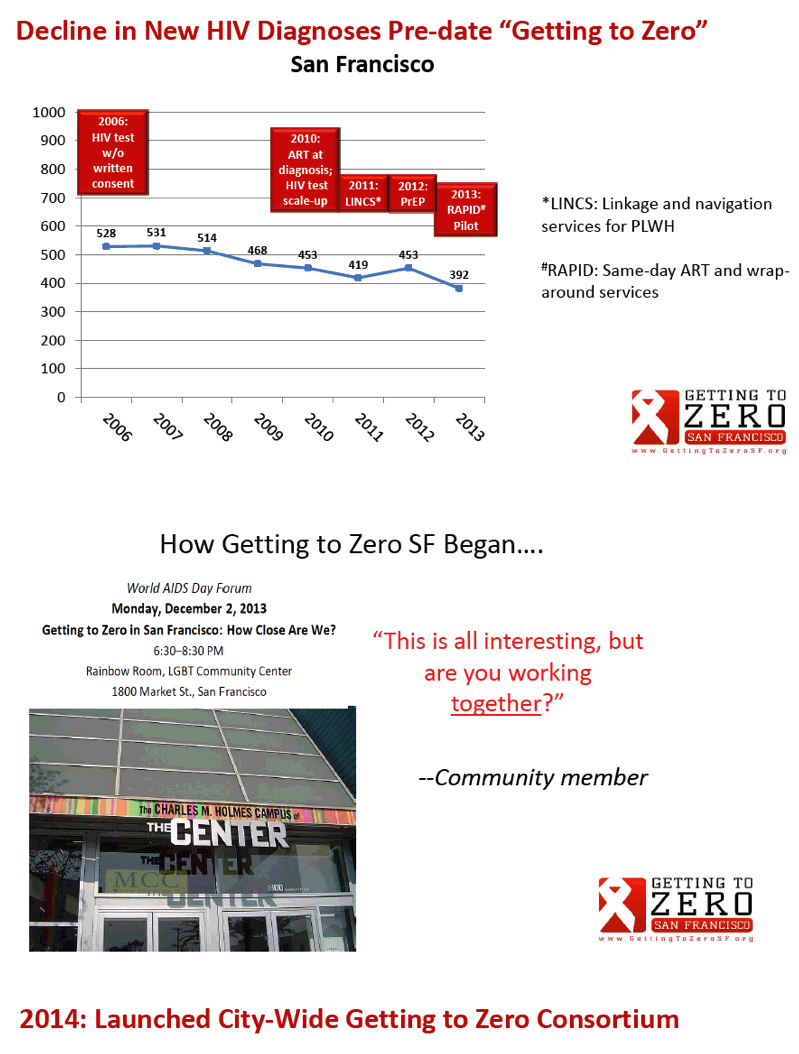
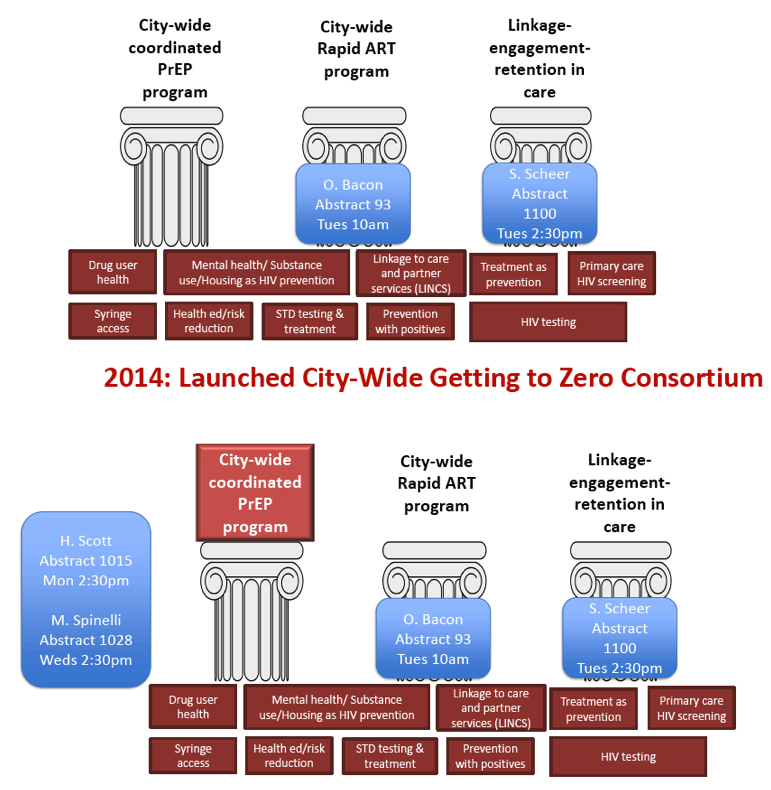
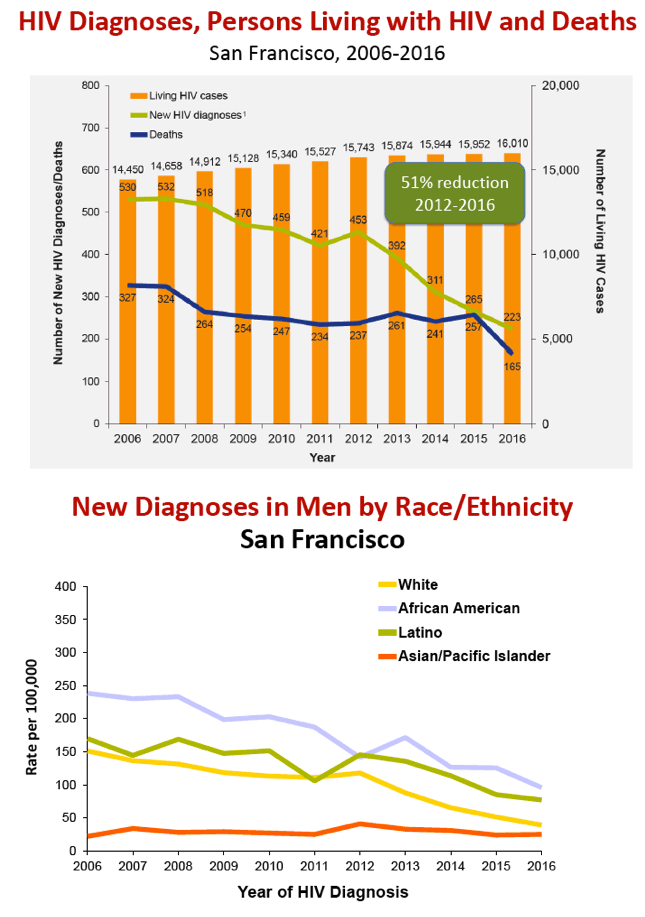
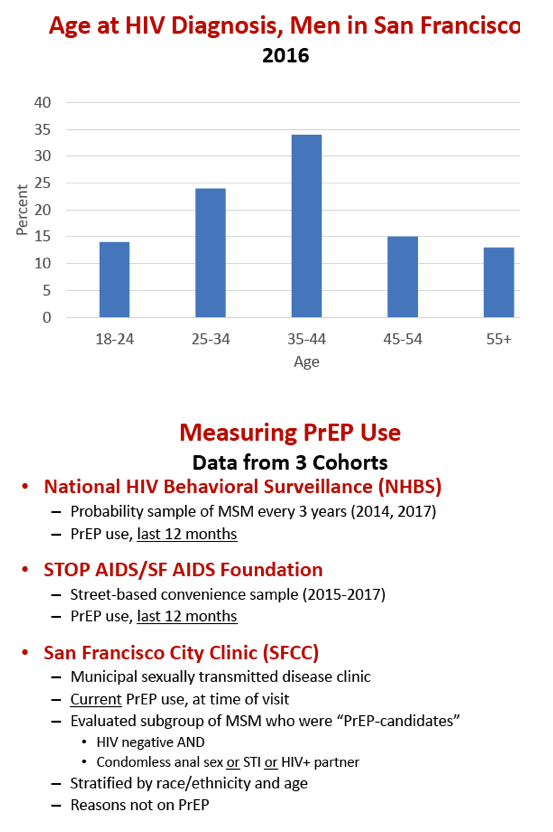
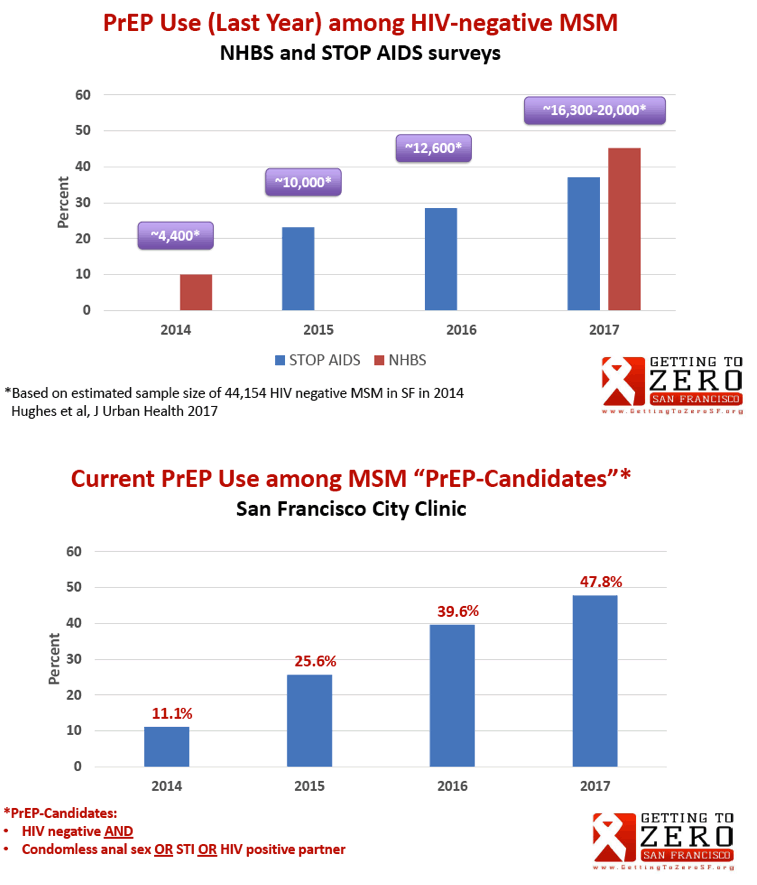
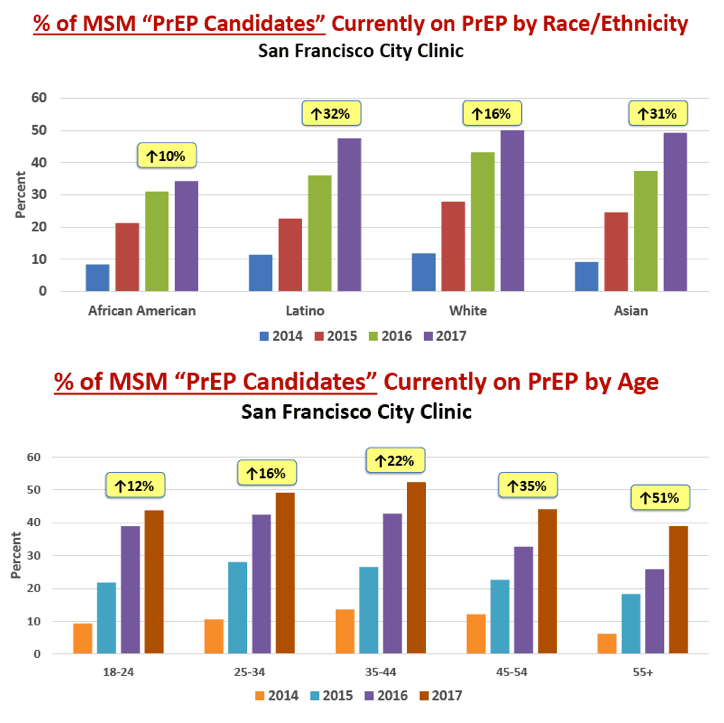
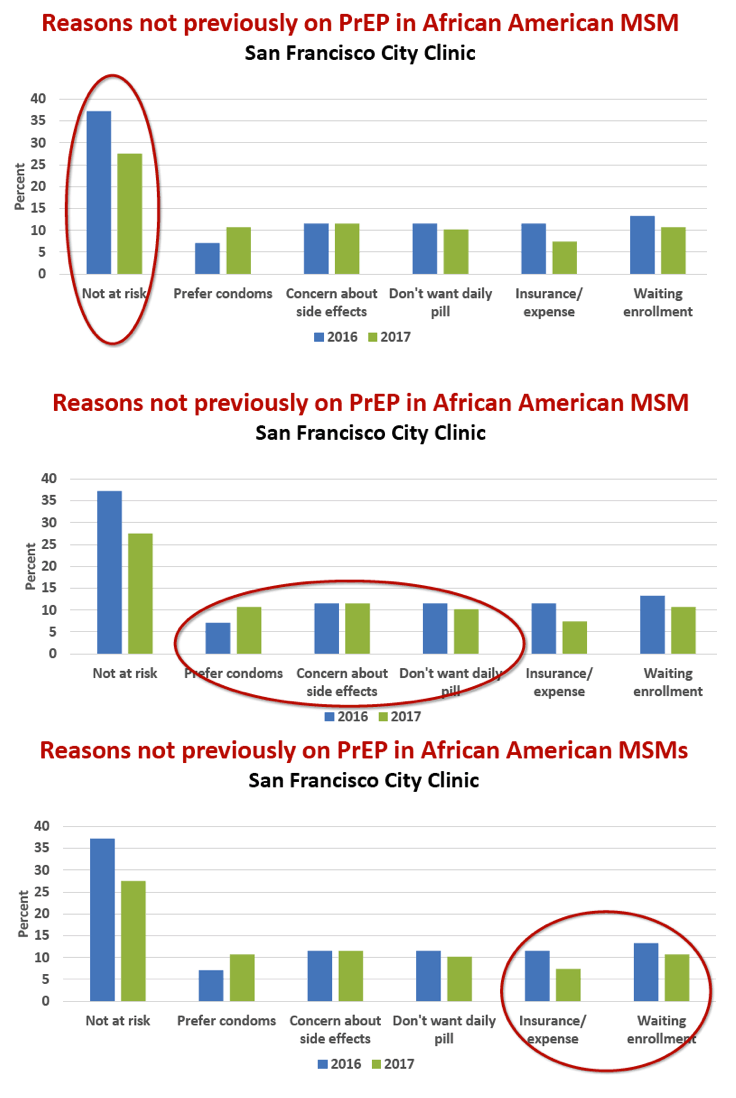
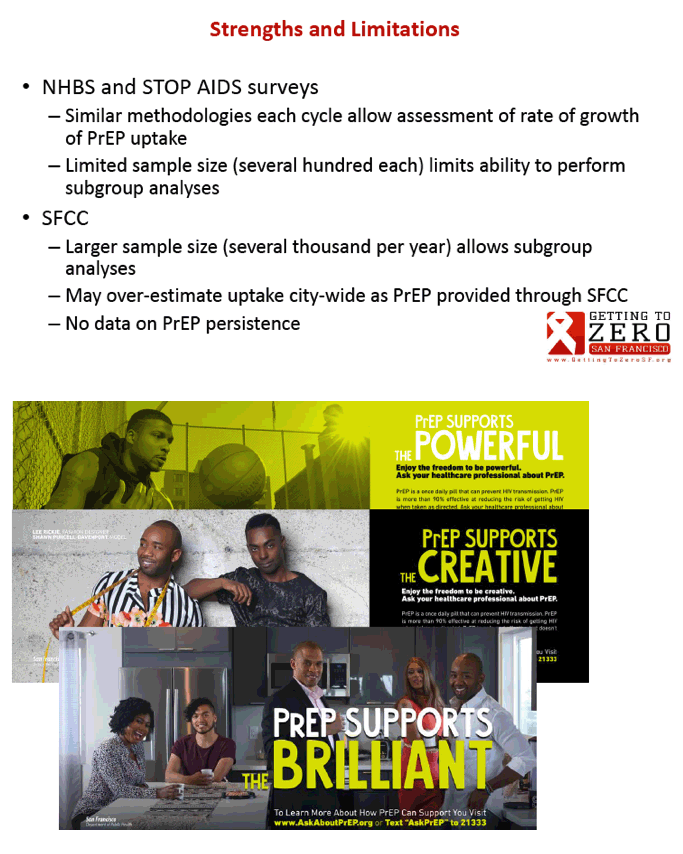
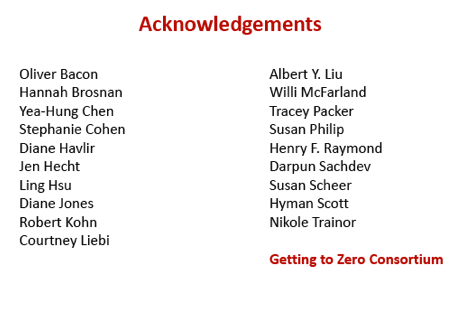
|
| |
|
 |
 |
|
|